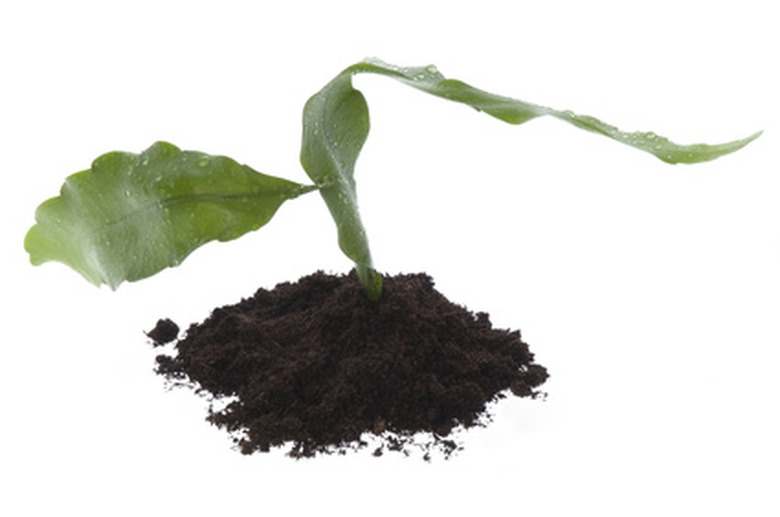The Density Of Potting Soil
Potting soil is primarily used for plants grown in containers. For that reason, it often contains ingredients to make it less dense or more dense, depending on the needs of the plant. In fact, many potting soils are marketed for specific potted plants, from tropical foliage plants to the "soil-less" mixtures that are created for plants like orchids. The density, of heaviness or soil, has a dramatic effect on the amount of water the soil retains.
Definition
Soil density is determined by calculating the weight of the soil (dry) divided by the volume, which includes the pores. The higher the number, the heavier and more compacted the soil. Potting soil may have the soil density number (shown as g/cm3) printed on the package.
- Potting soil is primarily used for plants grown in containers.
- Soil density is determined by calculating the weight of the soil (dry) divided by the volume, which includes the pores.
Function
Very dense soils retain water well, but they make it very difficult for the roots of a plant to grow through the soil, according to Cornell University. African violets, for example, have shallow, delicate roots and require potting soils that have a very low density (that are airy and loose); many potting soils are made specifically for African violets. Orchids, too, require very light soil.
Types
Potting soils are often marketed according to their density, which is determined by the ingredients. Those that are called "soil-less" are often the least dense. Those that are labeled "nutrient rich" might be quite heavy and usually contain organic matter.
Ingredients
Potting soils usually contain several different types of materials, according to Professor's House. Soils that contain mosses and sand are usually less dense than those that contain earth, humus and manure or other organic fertilizers. Most are a mixture of ingredients that help the soil retain water (or drain well) and minerals and nutrients.
- Very dense soils retain water well, but they make it very difficult for the roots of a plant to grow through the soil, according to Cornell University.
Amendments
Soil that is too dense is often amended with sand or perlite to help the water drain more easily and bring more air to the roots. Peat moss can also lighten up soil, although it is usually added to help soil retain water rather than drain water. Too much of these ingredients, however, can create air pockets around the roots, drying them out. Most plants do best in soil with medium density. The soil particles should stick together when pressed in a lump, but then quickly crumble.
